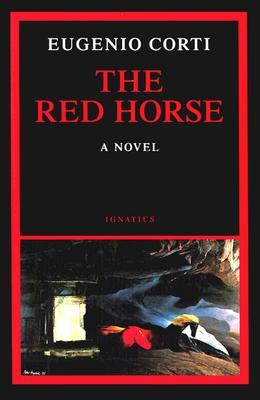Eugenio Corti is one of the greatest Christian writers of the past half-century. Although he is virtually unknown to the anti-Christian literary establishment in Italy, he is revered not only by conservative Italian Catholics but by straight-thinking Protestants in France, Switzerland (Jean-Marc Berthoud), and the United States (Douglas Kelly). His literary output includes a magnificent play (The Trial and Death of Joseph Stalin), a memoir of his military service on the Russian front during World War II (published by University of Missouri Press as Few Returned), and—among other works of fiction—his magisterial three-volume novel, Il Cavallo Rosso—The Red Horse.
This translation has been a long time in the making, and its checkered history will someday make an amusing tale. Russell Kirk (inspired by his Italian translator, Mario MarcoUa) arranged for an initial version to be done over ten years ago. This version was corrected first by an Italian expert in English literature and subsequently revised by me. The miracle of the story (whose complexity I have only hinted at) comes at the end, when the president of Ignatius Press, Father Joseph Fessio, S.J., agreed to publish the entire work in one volume. As someone who has been involved in this project for ten years, I do not make the slightest pretense to impartiality. I have blurbed the book, written a sales letter for it, and would not dream of calling this essay a “review,” though Chilton Williamson has given permission to include it in the Reviews section.
What have I left to say about a work I have read several times—indeed, learned half of my literary Italian by studying it? Finishing that sentence, I looked up to see on the inner door of my office a vast yellow poster advertising a speech given in the town of Carafe Brianza, not far from Dr. Corti’s home in Besana: Il Cavallo Rosso di Eugenio Corti negli USA . . . Relatore Thomas J. Fleming. In that lecture, given in April 1993, I emphasized the agrarian aspects of the novel whose moral center is “Nomana” (= Besana), a small town in the Brianza, which is a hilly district of Lombardia stretching east to west to the south of Como and Lecco. Although the area still has many unspoiled farms, green hilltops, and patches of forest, the Brianza is also home to the small textile manufacturers that have made Lombardy a center of the apparel and fashion industry since the Middle Ages. (In Manzoni’s I promessi sposi, set in the early 17th century, Renzo, who lives a little south of Lecco, was a weaver.)
Corti begins his novel by painting a picture of two peasants, father and son, going about their age-old task of plowing their field just outside Nomana. The central cast of characters, however, is more urban: the textile manufacturer who runs his business with solid “Protestant” ethics combined with a medieval loyalty to his people (not really just “employees”) and his family and their friends. The novel chronicles the adventures of the manufacturer’s son Ambrogio, Ambrogio’s schoolfriend Michele Tintori, and Ambrogio’s cousin Manno through the history of fascist Italy, the war (which Corti saw from both sides), the bitter civil strife that concluded World War II in Italy, and the slow, inexorable degradation of a great Christian people into the Italy of today.
A good part of the book is devoted to a graphic depiction of the lives of the Italian soldiers whom Mussolini dispatched to the Russian front. A vast number of them died in combat, and of those who were taken prisoners by the Russians, very few returned: Palmiro Togliatti, head of the Italian Communist Party, told Stalin not to send back the Italian POW’s because they would spill the beans on the reality of life in the worker’s paradise. Predictably, Togliatti is revered in Italy as the patriot who eschewed violence (though he and his part)’ kept contact with the Red Brigades) and brought the communists into the mainstream. Some of the most heartrending episodes in the novel, in fact, take place after the war, when the children of the soldiers take to running with a hip, skirt-chasing priest who preaches the glories of communism. Like so many Cassandras, the veterans watch in horror as their friends and children believe the propaganda and reject the true witnesses to the truth.
But The Red Horse is not simply a novel about war and politics. It is a saga of family life, of true love, and of love misplaced. Imagine a work that is more readable than Gone with the Wind and at least as serious as War and Peace, and you will form some conception of its power. If you are like me, you probably imagine that everything good was written before you were born, but that is despair talking. There are fine novelists writing today in the United States (George Garrett and Cormac McCarthy, to name only two) and in France (Jean Raspail). Lombardia, the region of Italy’s greatest novelist, Alessandro Manzoni, has produced another master: Eugenio Corti. If you put off buying and reading this book for five years, you will have only yourself to blame.
[The Red Horse, by Eugenio Corti (San Francisco: Ignatius Press) 1015 pp., $29.95]

Leave a Reply